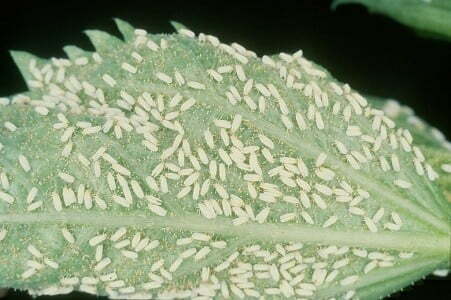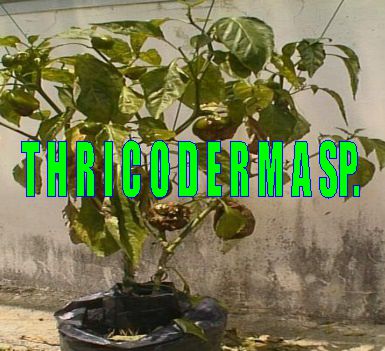There are sources of organic potassium for plants, but….
There are not many organic sources of potassium for plants. Especially, if we are looking for a high concentration. Although almost all organic matter contains potassium, its percentage is very small.
Leaf vegetables, such as kale, spinach, mustard greens, pakcoy, etc., have a fairly high average mineral content. Including potassium. But it is impossible if we process vegetables into fertilizer, except for the waste.
Alternatively, we should look for other organic sources for potassium, which humans do not really need. At least, the economic value is low.
For example, coconut husks, banana peels, rice straw, hardwood charcoal, kapok fruit peels, and cocoa skins.
Some of the organic materials above are sources of organic potassium. And, the amount or concentration of potassium in it is quite a lot.
Apart from coconut husk and cocoa rind, these materials have not been touched by many creative ideas. We can use the ingredients above as a organic source of potassium for plants.
As we know, the price of potassium fertilizer is very expensive. When compared with inorganic fertilizers, especially for high-potassium fertilizers.
Organic potassium sources can be an alternative for farmers to maintain the quality of their crops. Because the element potassium is one of the important macro nutrients when plants enter the generative phase.
Flower formation, fruit enlargement, and plant resistance to disease are strongly influenced by the amount of potassium absorbed.
Therefore, if farmers can obtain alternative sources of potassium, this can reduce the expenditure of inorganic potassium fertilizers. Thus, expenses can be more efficient.
Let’s see one by one, how the potential of this organic potassium sources for plants. As well as some of its applications to plants directly.
1 . Cocopeat as a organic sources of potassium for plants
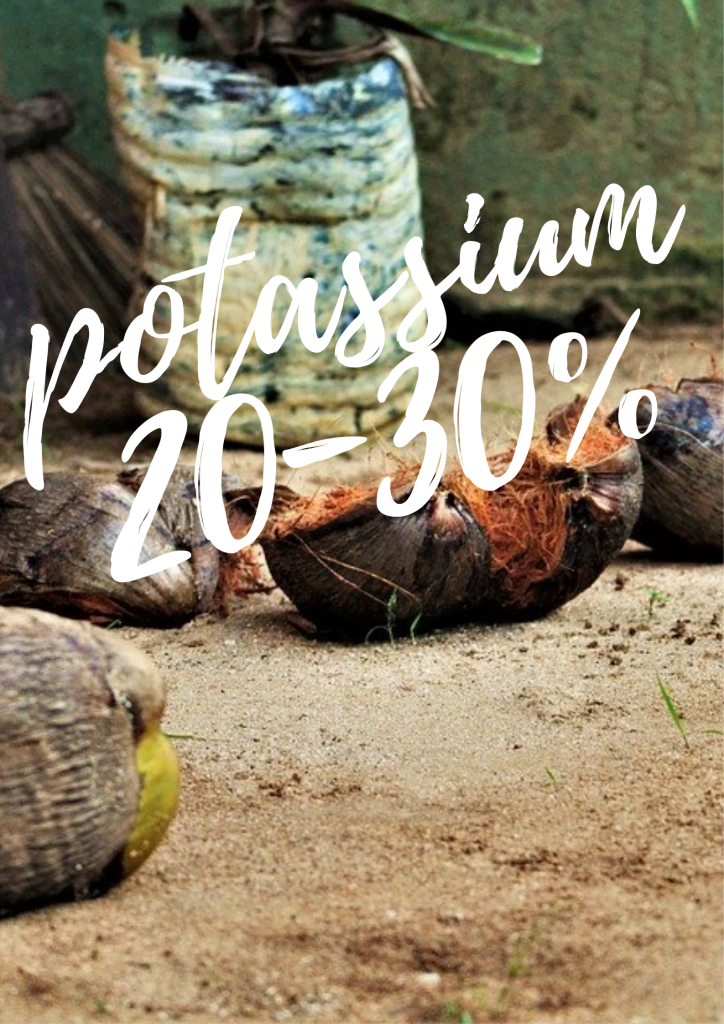
The potassium content in cocopeat is quite a lot. This potassium is mostly found in the fiber part of the fruit skin.
When in the form of cocopeat, the amount of potassium is about 10.25%.[1] Meanwhile, when it is in the form of cocopeat ash, the potassium value is between 20-30% higher.[2]
That’s right, the amount of potassium is very much. Almost equivalent to commercial inorganic fertilizers.
Besides containing potassium, cocopeat ash also contains phosphorus. But the number is small, only about 2%.
To get ash from cocopeat is also easy to make. Just burn it.
As a source of organic potassium, cocopeat ash has been proven to increase potassium uptake in plants. Truely can be used as fertilizer. Plant growth is also fine.
The effect of potassium administration on plants from inorganic K and cocopeat K ash is equally good. This has been confirmed by several previous studies.
The results showed that the application of cocopeat ash was able to increase the availability of K in the soil and improve soil pH.
The application of 39.25 grams of cocopeat ash/plant showed that the availability of K in the soil remained high at 4 months after planting.
Besides being used as direct fertilizer, namely in the form of ash, cocopeat can also be made into liquid fertilizer.
How to make liquid fertilizer from cocopeat ash is also very easy. It doesn’t require a lot of weird equipment and materials. Just simple ingredients.
How to make liquid organic fertilizer from cocopeat is as follows:
- cocopeat as much as 30 – 50 kg
- Then a number of cocopeat ash is put into a barrel with a volume of about 200 liters.
- Add clean water until the vat is full.
- Cover and leave for 4 weeks (one month).
- Organic potassium liquid fertilizer is ready to use
Potassium liquid fertilizer from coconut coir can be used as a flush fertilizer. For corn plants, potassium liquid fertilizer is best if given as much as 300 ml/plant.[4] This dose can make corn grow the highest among other doses. In addition, the K uptake is also higher.
2 . Banana peel as a organic sources of potassium for plants
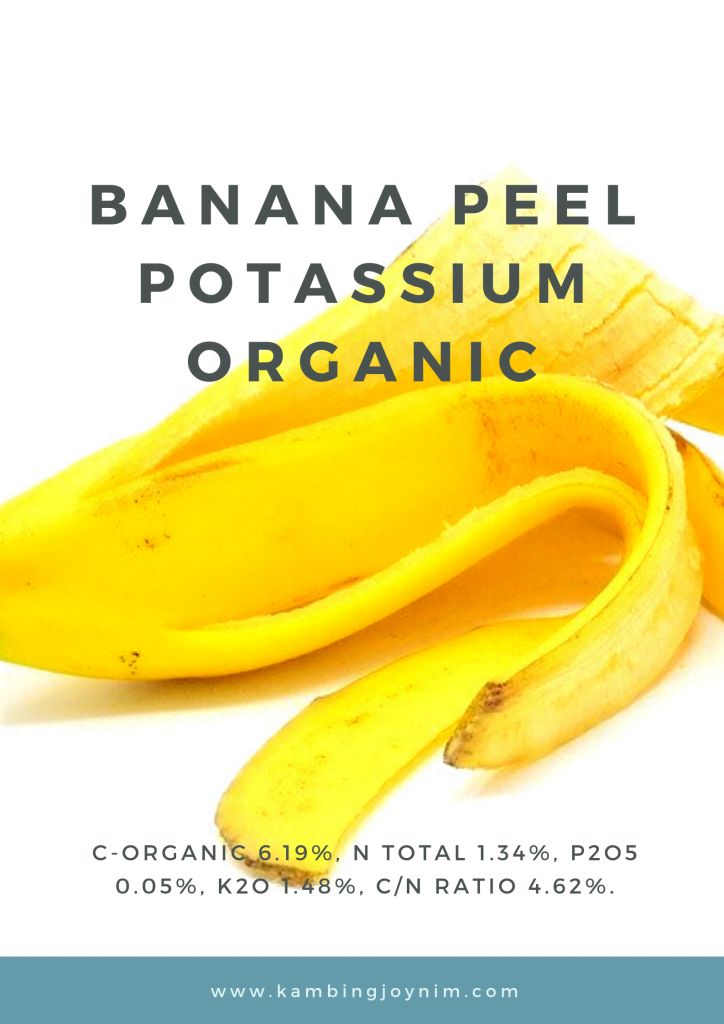
Besides cocopeat ash, a very potential source of organic potassium is banana peel.
The potassium content in banana peel is 15% and 2% is phosphorus. This is a very large amount for potassium.[5]
However, other sources say the value is too high. Because the nutrient content of this banana peel fertilizer can be seen in the table below.[6]
| Nutrient content | Solid banana peel fertilizer | Liquid banana peel fertilizer |
| C-Organic | 6.19% | 0.55% |
| N total | 1.34% | 0.18% |
| P2O5 | 0.05% | 43.00% |
| K2O | 1.48% | 1.14% |
| C/N rasio | 4.62% | 3.06% |
| pH | 4.8 | 4.5 |
So, there is a significant difference in the amount of potassium between one source and another.
How to make liquid fertilizer from banana peels.[3]
- 5 kg banana peel,
- cut into small pieces and blended until smooth.
- Add 125 mL of effective bacteria micro-organisms and 125 g of sugar.
- All ingredients are dissolved in a plastic jar containing 5 liters of water and then stirred.
- Then closed tightly and let ferment for 8 days. L
- iquid organic fertilizer resulting from fermentation for 8 days is stirred and then filtered.
3 . organic potassium from kapok peel
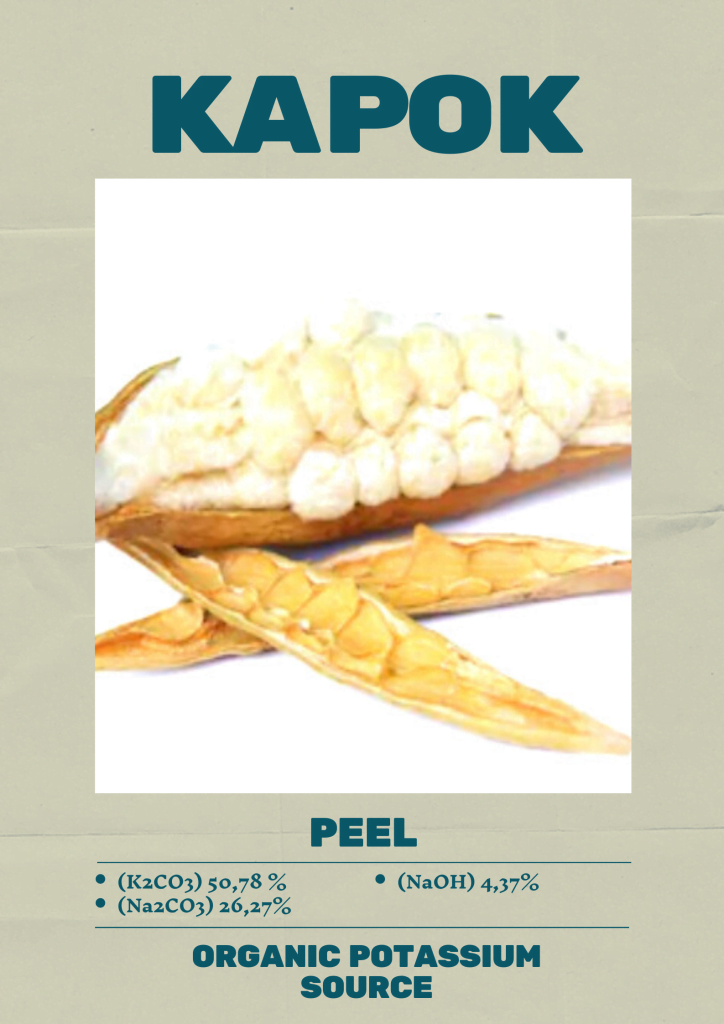
kapok peel is very underutilized at this time. After taking the kapok fiber, most of the skin is removed.
Currently, the most widely used kapok waste is the kapok seed. Because the oil can be taken and the cake can be used as animal feed.
But for the kapok peel, not many have been touched by creative ideas.
Actually, the potassium content in kapok peel is very high. Even higher than coconut husk.
But, for processing, it requires more effort. Transferring or separating potassium from kapok peel is quite difficult and requires a lot of money.
Kapok contains several alkaline compounds that are beneficial for life. Kapok peel ash contains 50.78% potassium carbonate (K2CO3), 26.27% sodium carbonate (Na2CO3), and 4.37% sodium hydroxide (NaOH).
It’s simple and easy to make the ashes. Live burned until charred and all to ashes.
However, potassium is available in the form of potassium carbonate (K2CO3) compounds. As for fertilizers, potassium must be available in the form of potassium oxide (K2O).
So it is necessary to continue the process to convert potassium carbonate into potassium oxide. Requires high temperatures to do so.
For example like this.
The highest temperature required for kapok peel pyrolysis by burning for 3 hours is 500 oC with a K2O content of 35.91%.[7]
This means that to obtain organic potassium from kapok fruit skin, a very high temperature pyrolysis process is needed.
4 . Rice Straw
Rice straw is also a very good source of organic potassium. If this straw is returned to the fields, it can contribute more potassium elements. And the dose of inorganic potassium use can be reduced.
Exactly, what % of potassium content in rice straw, I do not know.
As far as the information I got, 80% of the potassium absorbed by rice during its life is in the rice stalks (straw). While the rest, potassium is absorbed in the grain.
Therefore, if the rice straw is returned to the fields, it can add potassium to the land. Just mix it with the soil in the fields.
Based on research, returning this rice straw can provide a fairly positive development of rice plants.
With low soil quality, 100 kg KCL/ha is equal to 10 tons of rice straw per hectare. The benchmark is the development and growth of rice plants.
For the inorganic Potassium saving program, 25 kg KCL/hectare with the addition of 7.5 tons/hectare rice straw gave the best rice growth.[8]
If rice straw is free, then the savings on chemical fertilizers can be saved up to 75%.
Those are some organic sources of potassium for plants that we can use.
I don’t include compost here, because the potassium content in compost is on average low. So, the compost is not the main source of potassium.
I’ll end it here, please share if you like it. Thanks for passing by.
 JOYNIM FARM Goat Farming, Cattle Farm, Laying Hens, Quail Farm, Gardening
JOYNIM FARM Goat Farming, Cattle Farm, Laying Hens, Quail Farm, Gardening

